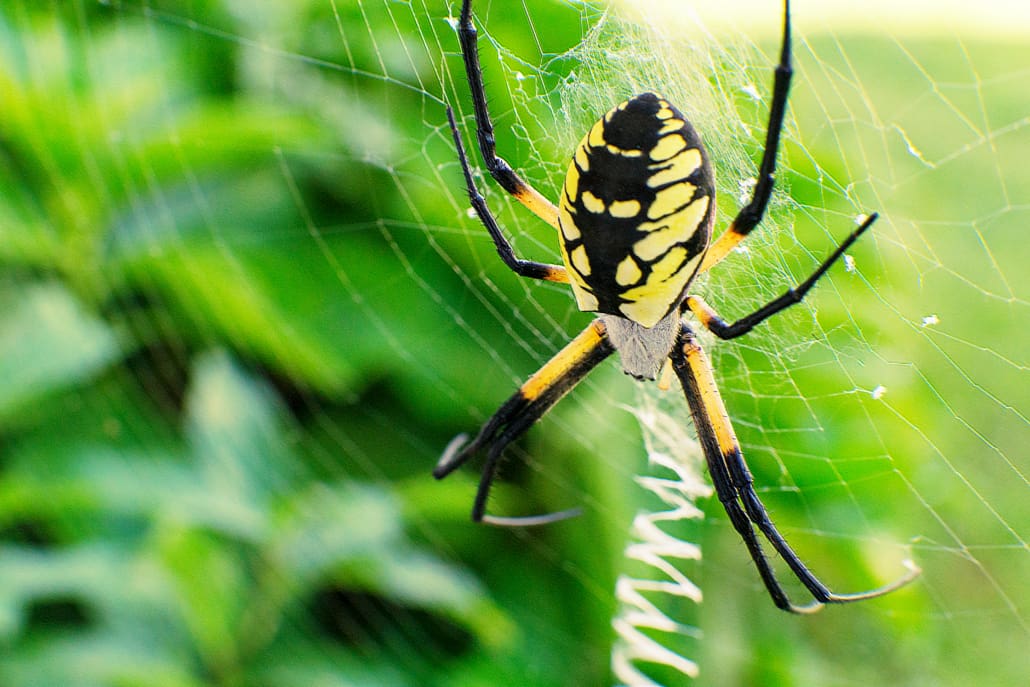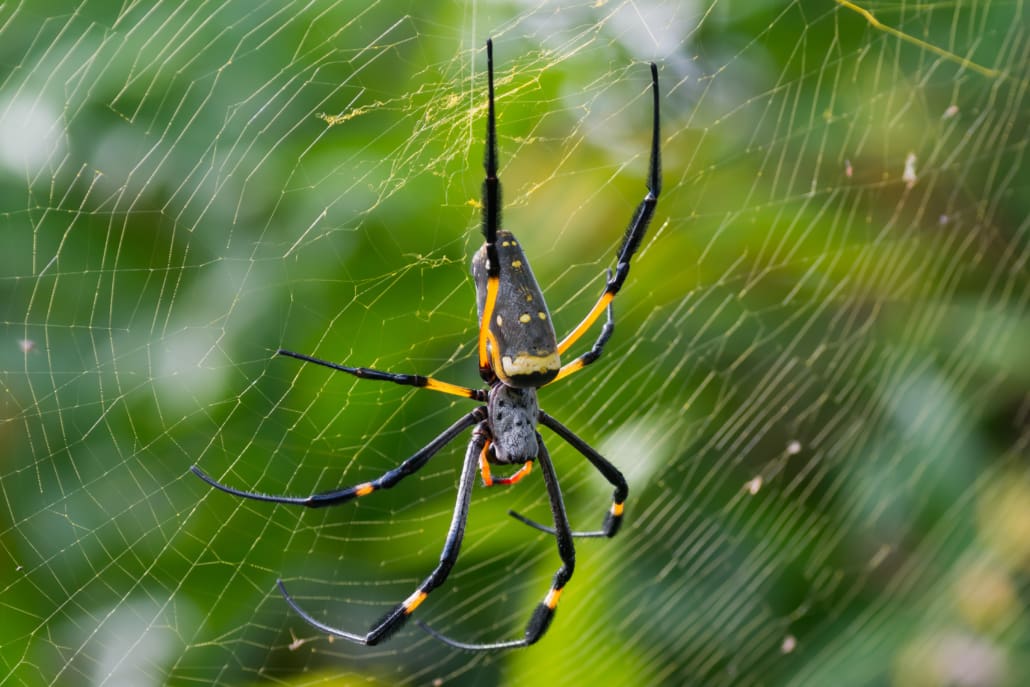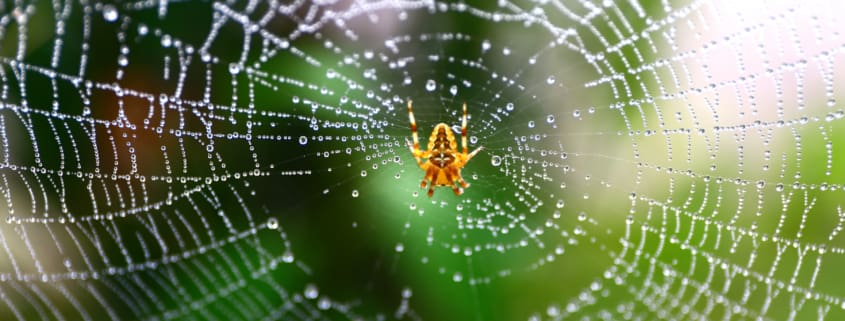What is a Garden Spider? Do They Enter Homes?
In today’s enlightened times, we embrace wildlife in all its forms. Animals and insects are crucial to our ecosystems and sustain our way of living as humans. At the same time, the last thing anybody wants is pests invading their living space, like when there’s a garden spider infestation in your house.
A garden spider or orb weaver spider in Washington State and Oregon has plenty of outdoor habitat options. They shouldn’t need to take up any of your living space. So it only makes sense for you to learn about these particular arthropods and how to protect your home from potential infestations including acquiring pest control services from professionals like Pest Pros when needed.
What is a Garden Spider?
The vast size of the black and yellow garden spider is rivaled by its massive, circular webs that the naked eye can’t miss. Despite their fearsome appearance suggesting they’re from a monster movie, having these particular arthropods in your garden is ideal due to their eating habits.
Here are some other black and yellow garden spider facts:
- The garden spider is also called the corn spider, writing spider, and banded garden spider. However, the technical name for this arthropod is the orb weaver spider.
- Females are easily identifiable through their yellow and black abdomens and the red or yellow markings on their eight black legs.
- When fully grown, the female black and yellow garden spider has a leg span that can reach three inches long from the back.
- Male garden spiders are smaller and less ornate in appearance, colored a drab brown and a quarter of a female’s size.
- A female’s massive, two-to-three-feet-wide web gets spun mid-summer when she’s seeking a mate and enough food for egg laying.
- Males build tinier webs within the female web. These webs are denser and less sophisticated. There can be several male webs within one female web.
Our team at Pest Pros has a vast knowledge about a variety of spiders including garden spiders which allows them to apply the most effective, customized pest control solution.
Garden Spider Vs. Orb Weaver Spider
The orb weaver spider and the garden spider are the same.
More specifically, the orb weaver spider family has a variety of spider body types and traits. Some of their bodies are black and yellow (like garden spiders), or they can be gray, orange, or brown.
Orb weaver spiders weave their prey-catching webs in bushes, gardens, and your home (which we’ll discuss later) and stay nearby to pounce on their future meal. They carry a mostly harmless venom in their bites that may cause red bumps to sprout on your skin. At worst, the resulting blemish will swell mildly and cause minor itching in most cases.


Types of Garden Spiders in the Pacific Northwest
Below, we’ll delve into what type of orb weavers we typically run into in some of our service areas at Pest Pros:
Orb Weaver Spider Washington State
Per the Pacific Science Center, one of the most common types of orb weaver spiders in Washington state are the garden orb weaver. You’ll most often see garden orb weaver spiders in autumn, although they’re around all year.
Seattle and the rest of the Western Region of Washington State are primarily home to the cross orb weaver, known for the white cross decorating its back. Eastern Washington State is typically home to the cat-faced orb weaver, with a trademark “cougar face” on its back.
Orb Weaver Spider Oregon
The typical types of orb weaver spiders in Oregon offer a habitat to be plentiful. A dozen separate orb weavers live across the state, including the cat-faced and cross-orb varieties found in Washington State. Also included in this list are the gray cross spider, trash line orb weaver, banded Argiope, and shamrock orb weaver, to name a few.
Do Garden Spiders Enter Homes?
Yes, Garden Spiders do enter homes.
However, you’re far likelier to find garden spiders on your home’s exterior. After all, they’re more adapted to the outdoors and prefer to spin their webs in high places to catch their flying insect prey.
Garden spiders thrive when they can live in the greenery on your home’s exterior. While these particular arthropods most commonly find habitat in your garden, they’re known to build webs outside of homes or in outdoor sheds and toilets since they’re unheated.
Typically, garden spiders like avoiding areas that are too hot and dry and where prey is plentiful.
The chances to hunt prey dwindle come the colder winter months. During this time, only the strong garden spiders survive after finding a location to partake in diapause, their version of hibernation.
Protection from frost is a garden spider’s top priority during diapause. They often nest in rotten logs and nooks in rocks. Yet, when they can leverage man-made options like an errant pair of garden gloves in a woodpile, they will.
At the same time, orb weavers will find their way into your home to build their webs. Provided your home is rife with tiny airborne insects, they’ll nest around areas with nightlights. However, they’ll also make webs around your home’s exterior on walls, fences, high tree branches, and bushes to store meals.
Are Garden Spiders Dangerous? Will They Threaten You or Your Home?
For the most part, you’ll find that garden spiders are nonaggressive and docile. That said, they will bite if they feel trapped or threatened or they’ve been stepped on. Their bites are similar to bee stings–and as has already been discussed–their bites result in little more than redness, swelling, and mild itching.
Provided you see a black and yellow garden spider in your garden, leave them to their business.
While a garden spider or orb weaver isn’t bound to cause substantial damage to your home, infestations aren’t ideal for any home.
Pest Control For Garden Spiders
The sticking point of the orb weaver spider is in their name–the webs they create against your home.
Sure, unlike a wolf spider or giant house spider, you aren’t likely to deal with a direct encounter or danger within your home–especially since orb weavers are nocturnal. However, orb weavers often have a high level of web production, leaving spider webs visible in corners of your home’s interior and exterior.
While orb weavers are ideal in your garden, you also don’t want your yard overrun with spiderwebs.
Sure, your home likely won’t face any substantial structural damage. But there’s still a matter of your comfort and the cleanliness of your home.
If garden spiders have infested your property, you must act fast. Reach out to Pest Pros for our expert spider control services. We’ll provide a solution ASAP to eliminate the problem now and prevent any further spider issues in the future.
Pest Pros Spider Pest Control Services
Let us tell you a little about ourselves and our spider pest control services at Pest Pros.
When treating your home for a spider infestation, we use material on your first-floor eaves to stop webbing from attaching to your exterior. Additionally, we equip exterior doorways with sticky traps to prevent orb weavers and other spiders from establishing themselves indoors.
From there, we offer suggestions to get rid of your home’s specific harborage points.
Often, we’re asked why we don’t spray for spiders. The answer is simple. Since spiders don’t have hooks but have pads on the end of their legs, there’s less surface for them to absorb pesticides.
Watch our video to learn more about our tried and true spider control process!
Call Pest Pros Today
Pest Pros has a team of reliable, licensed, and battle-tested professionals who know each pest problem is unique. We always provide a tailored, permanent solution to meet each customer’s needs, ensuring your infestation remains a distant memory.
If you need help with your pest control problem, whether Orb Weavers or anything else, contact Pest Pros today or request a free estimate.



